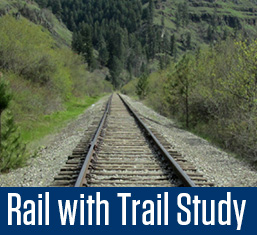Report
In this section we will give examples of how we gathered our data.
The purpose of this report is to provide close analysis on the effect of constructing a Rail with Trail on the economies of the communities in which the trial passes through. Economic Impact Assessment’s can assess the effect of an event on small neighborhood economies as well as economies on a global scale.
Introduction/Methodology and Assumptions/Economic Baseline/Community Capacity and Potential Estimates
Introduction: The first thing you want to do is introduce your vision to your projected audience. Our introduction gave sort of a foundation of what our project is being built upon as well as includes the goals of the project and what we intend to achieve with completing this assessment.
Methodology & Assumptions: Here in this section we explained that due to a lack of data, we had to make adjustments to our calculations. This section is where we included the assumptions we made while calculating data and doing analysis of the results.
Some of these assumptions included:
Using retaurant count rather than hotel count to determine We also included and described the methods used to reach the conclusions we came too.
Economic Baseline: Simple baseline data was collected for the communities that the trail would pass through. Such data included: Population, accommodations, lodging, food services, and entertainment. After the data was collect it was put into Microsoft Excel and was further analyzed.
Some good places to find baseline information is:
County Assessor Website (different for each county)
Chamber of Commerce (See county Chamber of Commerce)
Community Capacity and Potential Estimates: Using the analyzed economic baseline data, we gave each city a low to high rating based on the capacity of accommodations, food services, etc. A low rating would indicate that the community is under prepared due to lack of businesses, accommodations for visitors, etc. and a high rating would indicate that the community is well prepared for an inflow of visitors.
Potential Demand Analysis/Seasonal, Direct, & Indirect Effects/ Case Studies
Potential Demand Analysis: Analyzed the area of the trail and collected data for recreational activities already in the region. We then used this data to analyze and get a better idea of how many people are already coming to Eastern Oregon for recreation.
Seasonal Effects: We analyzed how the trail would be in effect throughout each season of the year. Especially because Eastern Oregon gets heavy snow during the winter. This section also analyzes the effects the trail will have on existing events and how they could potentially go hand in hand with one another.
Direct Effects: These effects include new money that is being brought into the community economies along the trail. This includes the analysis of: direct financial transactions- purchases, employee payments, and hotel taxes.
Here, we made the distinction between direct effects from construction of the trail and future trail users.
At this level in the planning stages of the project, we weren’t able to make a complete thorough analysis of the direct effects of the project.
During construction the construction workers that are hired to construct the trail (if hired locally the overall economic benefit increases), will bring business to local hotels and B&B’s, as well as restaurants and food stores. Subsequent to the construction workers completing the trail, future trail users will replace construction workers and continue the stream of benefits being brought into the economy.
Indirect Effects: This section will talk about how the trail impacts local people their quality of life within the region.
Include: purchasing of g/s by trail users and increase in real estate values near trail.
Case Studies: This section includes brief summaries of trails that had a similar type of location (rural, urban, etc.) as ours (rural) and also included the success that these trails have had after starting up.
« Cost Estimate | Data Collection »

